Region primed for global green hydrogen leadership
15 August 2022
 Published in partnership with
Published in partnership with

There have been fewer hot topics in the Middle East and Africa (MEA) over the past 18 months than the development of green hydrogen production.
Ever since Neom, Acwa Power and Air Products announced their $5bn investment in a world-scale green hydrogen production complex as the anchor project of the $500bn Neom development in 2020, energy companies around the world have been racing to establish plans of their own in the region.
Today, there are at least 46 known green hydrogen and ammonia projects across the MEA region, with an estimated total budget of more than $92bn.
Almost all have been announced since the start of 2021, equivalent to nearly two new projects a month.
Competitive advantage
This sudden surge of interest in hydrogen needs little explanation. Due to its climate, the region enjoys the world’s highest solar irradiation levels, enabling the production of some of the cheapest renewable energy anywhere.
The 600MW Al-Faisaliah independent solar photovoltaic (PV) power project in Saudi Arabia, for instance, currently holds the world record for the lowest renewable energy levelised cost of electricity of just $1.04 cents a kilowatt hour.
This electricity from renewable sources is used to electrolyse vast amounts of treated and filtered seawater to extract hydrogen, which in turn is processed with air-derived nitrogen to produce the more easily transportable ammonia.
The ammonia can then be liquefied, compressed and exported by ship to the end-user market, where it can be converted back to hydrogen to be used as a clean fuel or utilised as ammonia for fertiliser or other industrial processes.
Other alternatives include converting the hydrogen to methanol, another more easily transportable fuel product, or piping the hydrogen directly to the end user, either for domestic purposes or for export.
Along with plentiful sunlight, the other main requirement to house the huge solar and wind farms is space, something the region is generally not short of. Oil and gas-importing nations such as Morocco, Ethiopia and South Africa can also benefit from the hydrogen project boom.
 First mover status
First mover status
Aside from the environmental benefits of green hydrogen as a carbon-free fuel, it also offers the oil-exporting states of the Middle East the tantalising prospect of diversifying their dominant crude production position with hydrogen, thereby safeguarding their economies for decades to come as well as enhancing their geopolitical significance.
Speed of capital investment to drive technological leadership and potentially first-mover advantage is arguably going to be another important factor.
From a demand perspective, there is no doubt about green hydrogen’s potential. Demand in Europe alone is forecast to double to 30 million tonnes a year (t/y) by 2030 and to 95 million t/y by 2050.
Thanks to its geographical position, the Middle East is ideally located to meet this demand either by ship or pipeline.
Until recently, green hydrogen may not have been considered financially viable. Today, it could be described as an economic necessity
MEA Energy Week insights
The massive potential and development of a green hydrogen production industry was one of five central themes and insights emerging from the Middle East & Africa Energy Week hosted by Siemens Energy in June.
Yet a live poll of up to 400 delegates as part of Siemens Energy’s Middle East & Africa Energy Transition Readiness Index, produced in partnership with Roland Berger, highlighted that a substantial majority felt that Power-to-X technology – of which hydrogen production is a major component – was slow in meeting its potential.
To put this into perspective, with the notable exception of the Neom-based Helios project and the pilot green ammonia scheme at Ain Sokhna in Egypt, none of the other 44 announced green hydrogen projects in the region have yet to start work on the ground. Many have not even reached a full investor agreement.
The principal challenges revolve around financing, supply and power purchase agreements, land allocations and permitting. Ultimately, even with cheap electricity, green hydrogen is still comparatively expensive to produce after factoring in electrolysis, processing and transportation costs.
There is also some debate over whether the end-user market is ready to pay a premium for cleaner fuel or chemical feedstock.
A related poll question among the Energy Week’s attendees underlined this. Of 11 energy priorities presented, Power-to-X solutions were ranked as the lowest priority in terms of the impact on their companies’ achievement of climate targets.
However, this could change rapidly. The Russia-Ukraine crisis has focused European capitals on the pressing need to diversify fuel sources. Until recently, green hydrogen may not have been considered financially viable. Today, it could be described as an economic necessity.
Transitioning to hydrogen requires huge investment to develop technology, build projects and establish marketplaces that collectively contribute to a cleaner energy future. This coordinated effort by all stakeholders must be supported by policymakers
Nabil al-Nuaim, Saudi Aramco
Encouraging local demand
Equally important is the development of local hydrogen demand. To date, few formal policies or strategies have been announced to stimulate a market for domestic demand, reflected by the fact that almost all of the planned green hydrogen projects pipeline are export orientated.
While this export focus may make sense commercially, there was unanimity among the event’s participants that more could be done to encourage home-grown demand.
“Transitioning to hydrogen requires huge investment to develop technology, build projects and establish marketplaces that collectively contribute to a cleaner energy future,” said Saudi Aramco’s chief digital officer, Nabil al-Nuaim. “This coordinated effort by all stakeholders must be supported by policymakers to achieve success.”
This view was echoed by Khaled Sharbatly, CEO of solar PV panel manufacturer and power developer Desert Technologies. “We need to accelerate the growth of energy in Africa, accelerate energy storage and innovation, and build a regulatory framework where everyone is in sync,” he said.
The development of regulations and policy reforms to provide impetus will be vital for the market to grow, as will associated strategies such as introducing carbon pricing, reducing electricity subsidies, unbundling power networks and incentivising electric vehicle usage.
If it fails to do so, the region may miss the opportunity to capitalise on hydrogen’s potential to create jobs and a local manufacturing industry, diversify economies, and, most importantly, reduce carbon emissions and achieve net zero.
Exclusive from Meed
-
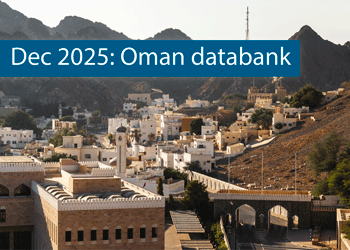 Oman’s growth forecast points upwards
Oman’s growth forecast points upwards24 December 2025
-
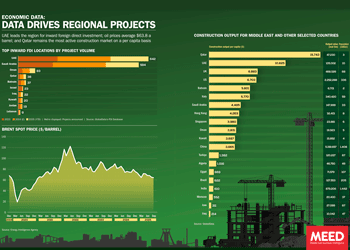 December 2025: Data drives regional projects
December 2025: Data drives regional projects23 December 2025
-
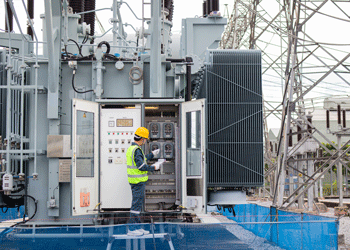 Local firm bids lowest for Kuwait substation deal
Local firm bids lowest for Kuwait substation deal22 December 2025
-
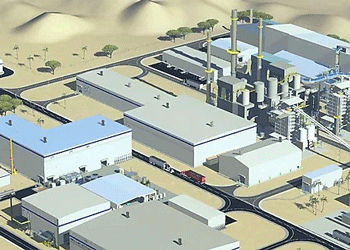 Saudi-Dutch JV awards ‘supercentre’ metals reclamation project
Saudi-Dutch JV awards ‘supercentre’ metals reclamation project22 December 2025
-
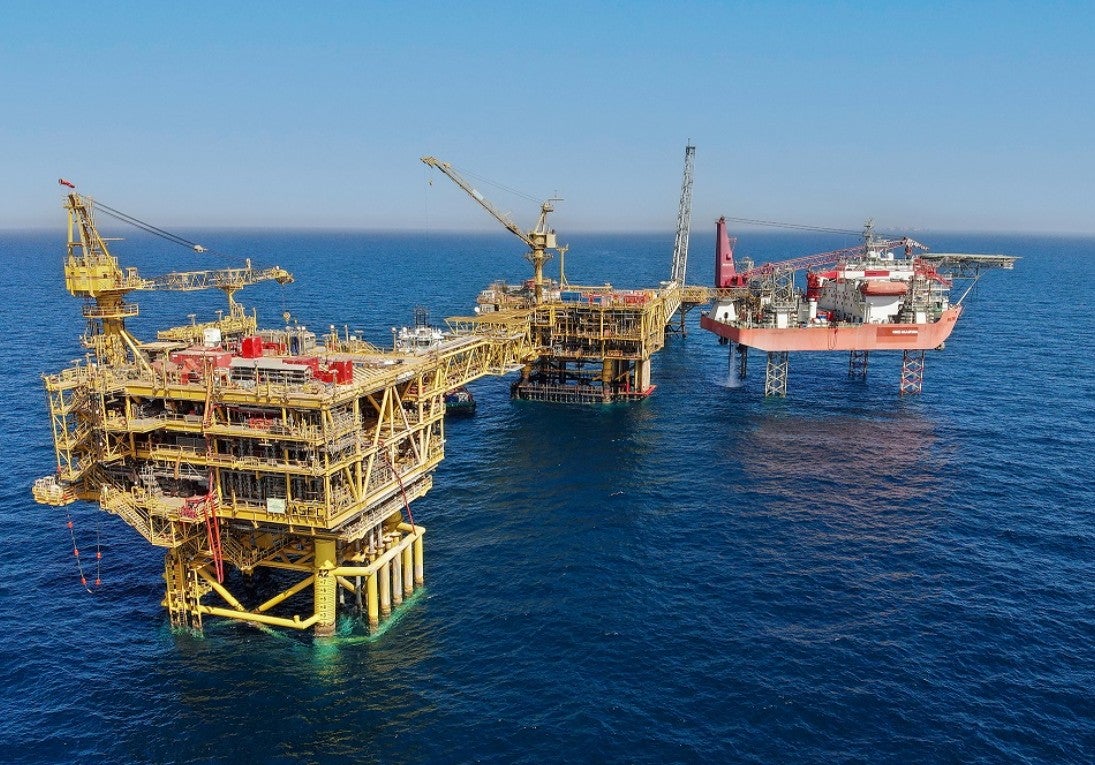 QatarEnergy LNG awards $4bn gas project package
QatarEnergy LNG awards $4bn gas project package22 December 2025
All of this is only 1% of what MEED.com has to offer
Subscribe now and unlock all the 153,671 articles on MEED.com
- All the latest news, data, and market intelligence across MENA at your fingerprints
- First-hand updates and inside information on projects, clients and competitors that matter to you
- 20 years' archive of information, data, and news for you to access at your convenience
- Strategize to succeed and minimise risks with timely analysis of current and future market trends

Related Articles
-
 Oman’s growth forecast points upwards
Oman’s growth forecast points upwards24 December 2025

MEED’s January 2026 report on Oman includes:
> COMMENT: Oman steadies growth with strategic restraint
> GVT & ECONOMY: Oman pursues diversification amid regional concerns
> BANKING: Oman banks feel impact of stronger economy
> OIL & GAS: LNG goals galvanise Oman’s oil and gas sector
> POWER & WATER: Oman prepares for a wave of IPP awards
> CONSTRUCTION: Momentum builds in construction sectorTo see previous issues of MEED Business Review, please click herehttps://image.digitalinsightresearch.in/uploads/NewsArticle/15306449/main.gif -
 December 2025: Data drives regional projects
December 2025: Data drives regional projects23 December 2025
Click here to download the PDF
Includes: Top inward FDI locations by project volume | Brent spot price | Construction output
MEED’s January 2026 report on Oman includes:
> COMMENT: Oman steadies growth with strategic restraint
> ECONOMY: Oman pursues diversification amid regional concerns
> BANKING: Oman banks feel impact of stronger economy
> OIL & GAS: LNG goals galvanise Oman’s oil and gas sector
> POWER & WATER: Oman prepares for a wave of IPP awards
> CONSTRUCTION: Momentum builds in construction sectorTo see previous issues of MEED Business Review, please click herehttps://image.digitalinsightresearch.in/uploads/NewsArticle/15306140/main.gif -
 Local firm bids lowest for Kuwait substation deal
Local firm bids lowest for Kuwait substation deal22 December 2025
The local Al-Ahleia Switchgear Company has submitted the lowest price of KD33.9m ($110.3m) for a contract to build a 400/132/11 kV substation at the South Surra township for Kuwait’s Public Authority for Housing Welfare (PAHW).
The bid was marginally lower than the two other offers of KD35.1m and KD35.5m submitted respectively by Saudi Arabia’s National Contracting Company (NCC) and India’s Larsen & Toubro.
PAHW is expected to take about three months to evaluate the prices before selecting the successful contractor.
The project is one of several transmission and distribution projects either out to bid or recently awarded by Kuwait’s main affordable housing client.
This year alone, it has awarded two contracts worth more than $100m for cable works at its 1Z, 2Z, 3Z and 4Z 400kV substations at Al-Istiqlal City, and two deals totalling just under $280m for the construction of seven 132/11kV substations in the same township.
Most recently, it has tendered two contracts to build seven 132/11kV main substations at its affordable housing project, west of Kuwait City. The bid deadline for the two deals covering the MS-01 through to MS-08 substations is 8 January.
https://image.digitalinsightresearch.in/uploads/NewsArticle/15305745/main.gif -
 Saudi-Dutch JV awards ‘supercentre’ metals reclamation project
Saudi-Dutch JV awards ‘supercentre’ metals reclamation project22 December 2025
The local Advanced Circular Materials Company (ACMC), a joint venture of the Netherlands-based Shell & AMG Recycling BV (SARBV) and local firm United Company for Industry (UCI), has awarded the engineering, procurement and construction (EPC) contract for the first phase of its $500m-plus metals reclamation complex in Jubail.
The contract, estimated to be worth in excess of $200m, was won by China TianChen Engineering Corporation (TCC), a subsidiary of China National Chemical Engineering Company (CNCEC), following the issue of the tender in July 2024.
Under the terms of the deal, TCC will process gasification ash generated at Saudi Aramco’s Jizan refining complex on the Red Sea coast to produce battery-grade vanadium oxide and vanadium electrolyte for vanadium redox flow batteries. AMG will provide the licensed technology required for the production process.
The works are the first of four planned phases at the catalyst and gasification ash recycling ‘Supercentre’, which is located at the PlasChem Park in Jubail Industrial City 2 alongside the Sadara integrated refining and petrochemical complex.
Phase 2 will expand the facility to process spent catalysts from heavy oil upgrading facilities to produce ferrovanadium for the steel industry and/or additional battery-grade vanadium oxide.
Phase 3 involves installing a manufacturing facility for residue-upgrading catalysts.
In the fourth phase, a vanadium electrolyte production plant will be developed.
The developers expect a total reduction of 3.6 million metric tonnes of carbon dioxide emissions a year when the four phases of the project are commissioned.
SARBV first announced its intention to build a metal reclamation and catalyst manufacturing facility in Saudi Arabia in November 2019. The kingdom’s Ministry of Investment, then known as the Saudi Arabian General Investment Authority (Sagia), supported the project.
In July 2022, SARBV and UCI signed the agreement to formalise their joint venture and build the proposed facility.
The project has received support from Saudi Aramco’s Namaat industrial investment programme. Aramco, at the time, also signed an agreement with the joint venture to offtake vanadium-bearing gasification ash from its Jizan refining complex.
Photo credit: SARBV
https://image.digitalinsightresearch.in/uploads/NewsArticle/15305326/main.gif -
 QatarEnergy LNG awards $4bn gas project package
QatarEnergy LNG awards $4bn gas project package22 December 2025
QatarEnergy LNG, a subsidiary of state-owned QatarEnergy, has awarded the main engineering, procurement, construction and installation (EPCI) contract for a major package for the second phase of its North Field Production Sustainability (NFPS) project.A consortium comprising the Italian contractor Saipem and state-owned China Offshore Oil Engineering Company (COOEC) has secured the EPCI contract for the COMP5 package. The contract value is $4bn, with Saipem declaring its share to be worth $3.1bn.
Milan-headquartered Saipem said the contract will run for about five years. The scope of work comprises engineering, procurement, fabrication and installation of two compression complexes, each including a compression platform, a living quarters platform, a flare platform supporting the gas combustion system, and the related interconnecting bridges. Each complex will have a total weight of about 68,000 tonnes.
Offshore installation operations will be carried out by Saipem’s De He construction vessel in 2029 and 2030.
MEED previously reported that the following contractors submitted bids for the NFPS phase two COMP5 package:
- Larsen & Toubro Energy Hydrocarbon (India)
- McDermott (US)
- Saipem/China Offshore Oil Engineering Company (Italy/China)
QatarEnergy LNG, formerly Qatargas, is said to have issued the tender for the NFPS phase two COMP5 package in the first quarter of the year.
Contractors submitted technical bids for the COMP5 package in late June, while commercial bids were submitted by 8 October, as per sources.
Based upon initial evaluation of bids by QatarEnergy LNG, L&TEH has emerged as the lowest bidder for the COMP5 package, followed by McDermott, with the consortium of Saipem and COOEC in third place, MEED reported in late October.
In the weeks following that, the project operator is said to have engaged all bidders for a final round of negotiations, during which the consortium of Saipem and COOEC is believed to have “clinched the deal”, according to sources.
The detailed scope of work on the COMP5 package covers the EPCI work on the following:
- Two gas compression platforms, each weighing 30,000-35,000 tonnes, plus jacket
- Two living quarters platforms, plus jacket
- Two gas flare platforms, plus jacket
- Brownfield modification work at two complexes
NFPS scheme
QatarEnergy’s North Field liquefied natural gas (LNG) expansion programme requires the state enterprise to pump large volumes of gas from the North Field offshore reserve to feed the three phases of the estimated $40bn-plus programme.
QatarEnergy has already invested billions of dollars in engineering, procurement and construction works on the two phases of the NFPS project, which aims to maintain steady gas feedstock for the North Field LNG expansion phases.
The second NFPS phase will mainly involve building gas compression facilities to sustain and gradually increase gas production from Qatar’s offshore North Field gas reserve over the long term.
Saipem has been the most successful contractor on the second NFPS phase, securing work worth a total of $8.5bn.
QatarEnergy LNG awarded Saipem a $4.5bn order in October 2022 to build and install gas compression facilities. The main scope of work on the package, which is known as EPCI 2, covers two large gas compression complexes that will comprise decks, jackets, topsides, interconnecting bridges, flare platforms, living quarters and interface modules.
The gas compression complexes – CP65 and CP75 – will weigh 62,000 tonnes and 63,000 tonnes, respectively, and will be the largest fixed steel jacket compression platforms ever built.
Following that, Saipem won combined packages COMP3A and COMP3B of the NFPS project’s second phase in September last year.
The scope of work on the combined packages encompasses the EPCI of a total of six platforms, approximately 100 kilometres (km) of corrosion resistance alloy rigid subsea pipelines of 28-inches and 24-inches diameter, 100km of subsea composite cables, 150km of fibre optic cables and several other subsea units.
Separately, QatarEnergy LNG awarded McDermott the contract for the NFPS second phase package known as EPCI 1, or COMP1, in July 2023. The scope of work on the estimated $1bn-plus contract is to install a subsea gas pipeline network at the North Field gas development.
In March this year, India’s Larsen & Toubro Energy Hydrocarbon (LTEH) won the main contract for the combined 4A and 4B package, which is the fourth package of the second phase of the NFPS project and is estimated to be valued at $4bn-$5bn.
The main scope of work on the package is the EPCI of two large gas compression systems that will be known as CP8S and CP4N, each weighing 25,000-35,000 tonnes. The contract scope also includes compression platforms, flare gas platforms and other associated structures.
LTHE sub-contracted detailed engineering and design works on the combined 4A and 4B package to French contractor Technip Energies.
NFPS first phase
Saipem is also executing the EPCI works on the entire first phase of the NFPS project, which consists of two main packages.
Through the first phase of the NFPS scheme, QatarEnergy LNG aims to increase the early gas field production capacity of the North Field offshore development to 110 million tonnes a year.
QatarEnergy LNG awarded Saipem the contract for the EPCI package in February 2021. The package is the larger of the two NFPS phase one packages and has a value of $1.7bn.
Saipem’s scope of work on the EPCI package encompasses building several offshore facilities for extracting and transporting natural gas, including platforms, supporting and connecting structures, subsea cables and anti-corrosion internally clad pipelines.
The scope of work also includes decommissioning a pipeline and other significant modifications to existing offshore facilities.
In addition, in April 2021, QatarEnergy LNG awarded Saipem two options for additional work within the EPCI package, worth about $350m.
QatarEnergy LNG awarded Saipem the second package of the NFPS phase one project, estimated to be worth $1bn, in March 2021.
Saipem’s scope of work on the package, which is known as EPCL, mainly covers installing three offshore export trunklines running almost 300km from their respective offshore platforms to the QatarEnergy LNG north and south plants located in Ras Laffan Industrial City.
Saipem performed the front-end engineering and design work on the main production package of the first phase of the NFPS as part of a $20m contract that it was awarded in January 2019. This provided a competitive advantage to the Italian contractor in its bid to win the package.
https://image.digitalinsightresearch.in/uploads/NewsArticle/15305330/main2239.jpg

